
Increasing Revenue Success with AI
Solving team ineffectiveness of sales opportunity workflows using predictive ML & AI
YoY Increase
The YoY increase in the sales conversion rate
Increase
The increase in revenue generated through predictive scoring
Additional Revenue
£2.3m+ additional revenue generated from optimised resource allocation
"We transformed chaos into clarity by building an AI system that could predict which businesses would succeed, allowing our teams to focus their energy where it mattered most.
"
The Challenge
When intuition meets data science - solving the resource allocation crisis
Crowdcube was experiencing rapid growth but faced a critical bottleneck. Our sales and account management teams were drowning in opportunities, spending valuable time on pitches that would never convert whilst potentially missing high-value prospects. With over 500 businesses entering our pipeline monthly, we needed a systematic way to identify which ventures would succeed and allocate our human resources accordingly. The traditional managed versus online approach was no longer scalable, and our informal priority system was causing inefficiencies across the entire customer journey. This project kicked off with an AI and Data Analytics project I undertook on my MBA, some of which is below, to understand funding predictability from historic data. This report is available upon request.
Team Inefficiency
Sales and account management teams were spending over 60% of their time on non-revenue generating opportunities
Pipeline Chaos
Only 47% of pitches (revenue ops) progressed past initial creation, with 73% never reaching completion despite having adequate time
Resource Misallocation
No systematic method existed to identify high-potential businesses, leading to missed revenue opportunities worth millions
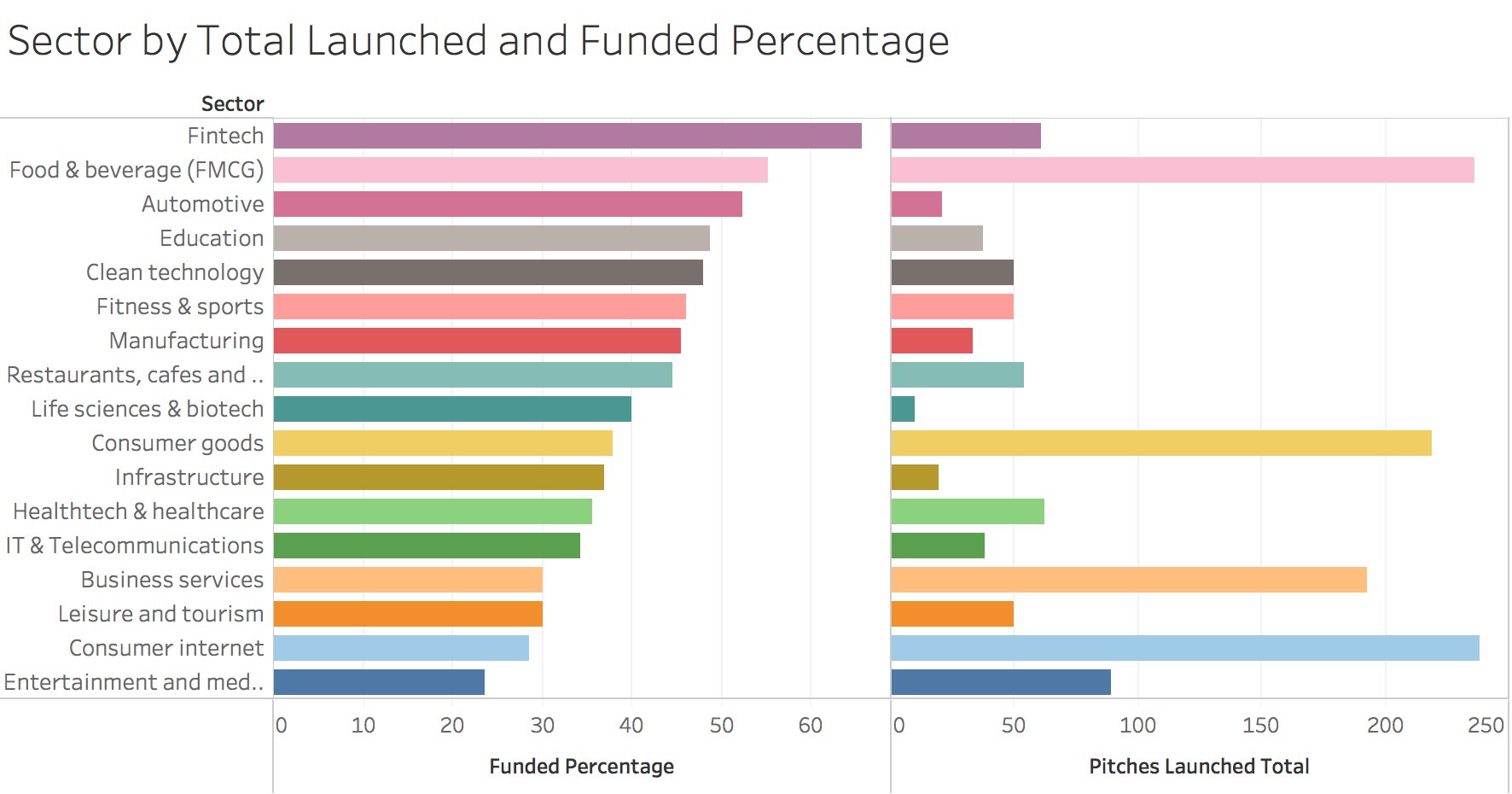

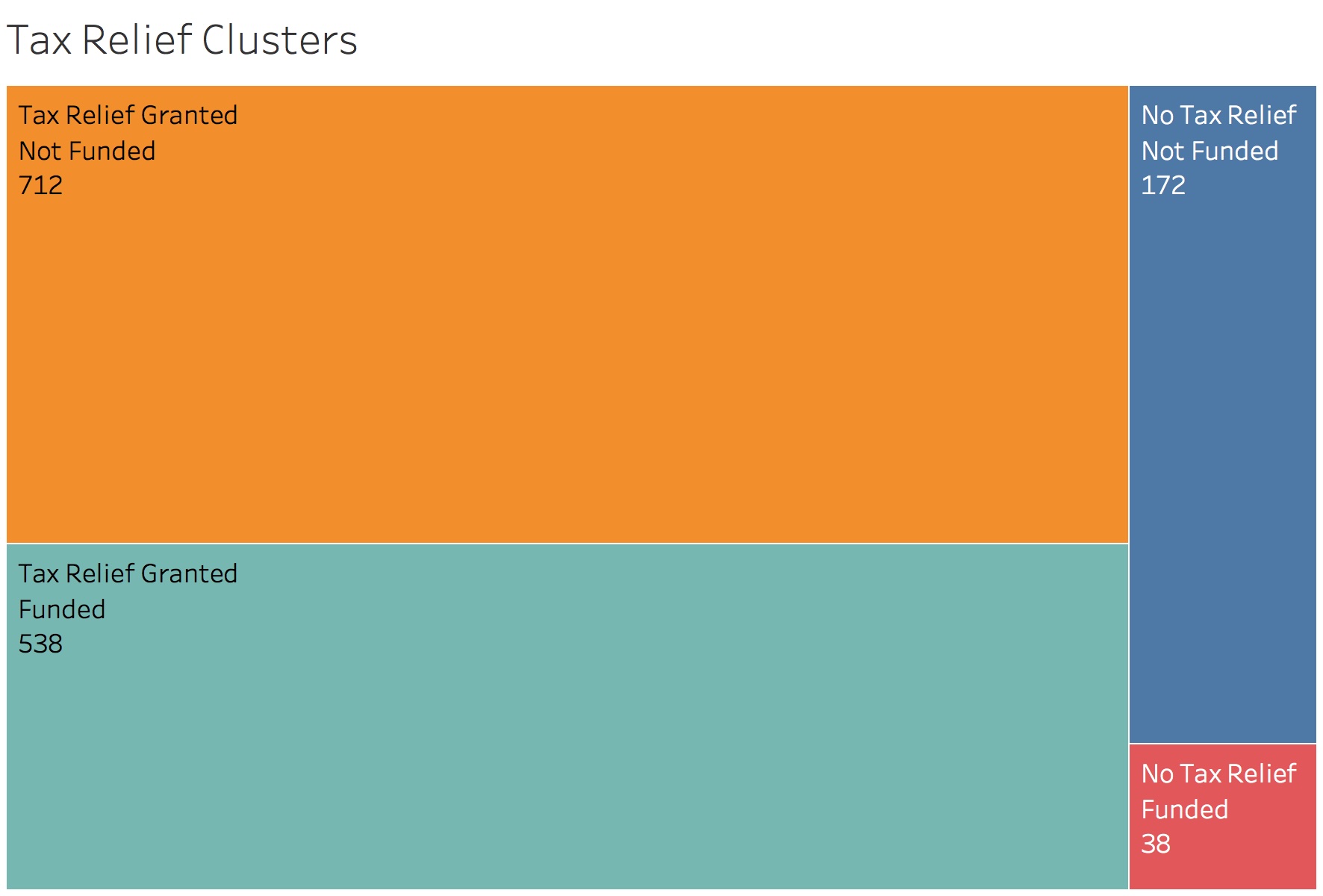
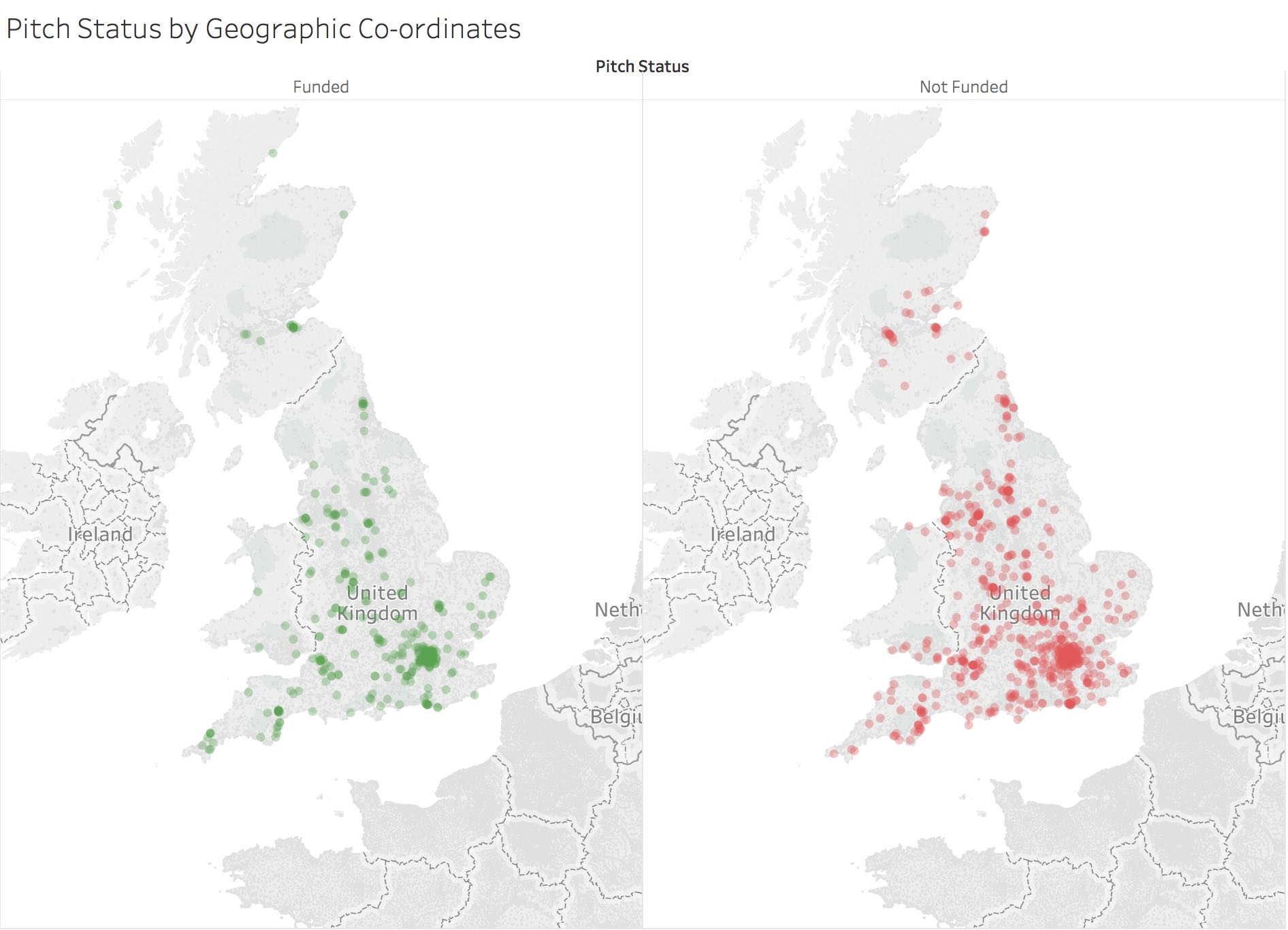
The Strategy
Building the first AI-powered equity crowdfunding prediction engine
My approach centred on creating a comprehensive machine learning system that would aggregate data from multiple sources to predict business success probability. Rather than relying on gut instinct, we would build a data-driven priority score that could evolve and learn from outcomes. The strategy involved three core pillars: comprehensive data integration from external sources like Companies House and SimilarWeb, advanced scoring algorithms that could predict likelihood to launch and fund, and seamless integration into existing workflows to ensure adoption across teams.
Data Integration
Aggregated seven different data sources including Companies House, Beauhurst, and social listening APIs into one unified dataset
Predictive Scoring
Developed machine learning algorithms to create dynamic priority scores that could forecast revenue success probability
Workflow Integration
Embedded the scoring system directly into Salesforce and existing processes to ensure team adoption and measurable impact
The Execution
From concept to production - building AI that actually works
The execution followed an agile methodology with four major iterations, each building upon learnings from the previous version. We started with a basic scoring model and progressively added complexity, external data sources, and advanced machine learning capabilities. The key was maintaining close collaboration with the end users (our sales and account management teams) throughout the process, ensuring each iteration solved their real problems rather than theoretical ones, and helped them work more effectively.
Foundation & Data Architecture
We began by mapping all available data sources and creating the technical infrastructure to support a machine learning pipeline. This involved establishing connections to Companies House records, Beauhurst startup data, our internal Salesforce CRM, and social listening APIs from SimilarWeb. The challenge was not just accessing this data, but cleaning, standardising, and matching it across different systems to create a unified view of each business in our pipeline.
Simultaneously, I worked with our data engineering team to build the analytics cluster that could handle the computational requirements of processing thousands of company records daily. We established data pipelines that could automatically update scores as new information became available, ensuring our predictions remained current and actionable for the sales teams.
"The hardest part wasn't building the algorithm - it was convincing seven different data systems to speak the same language."
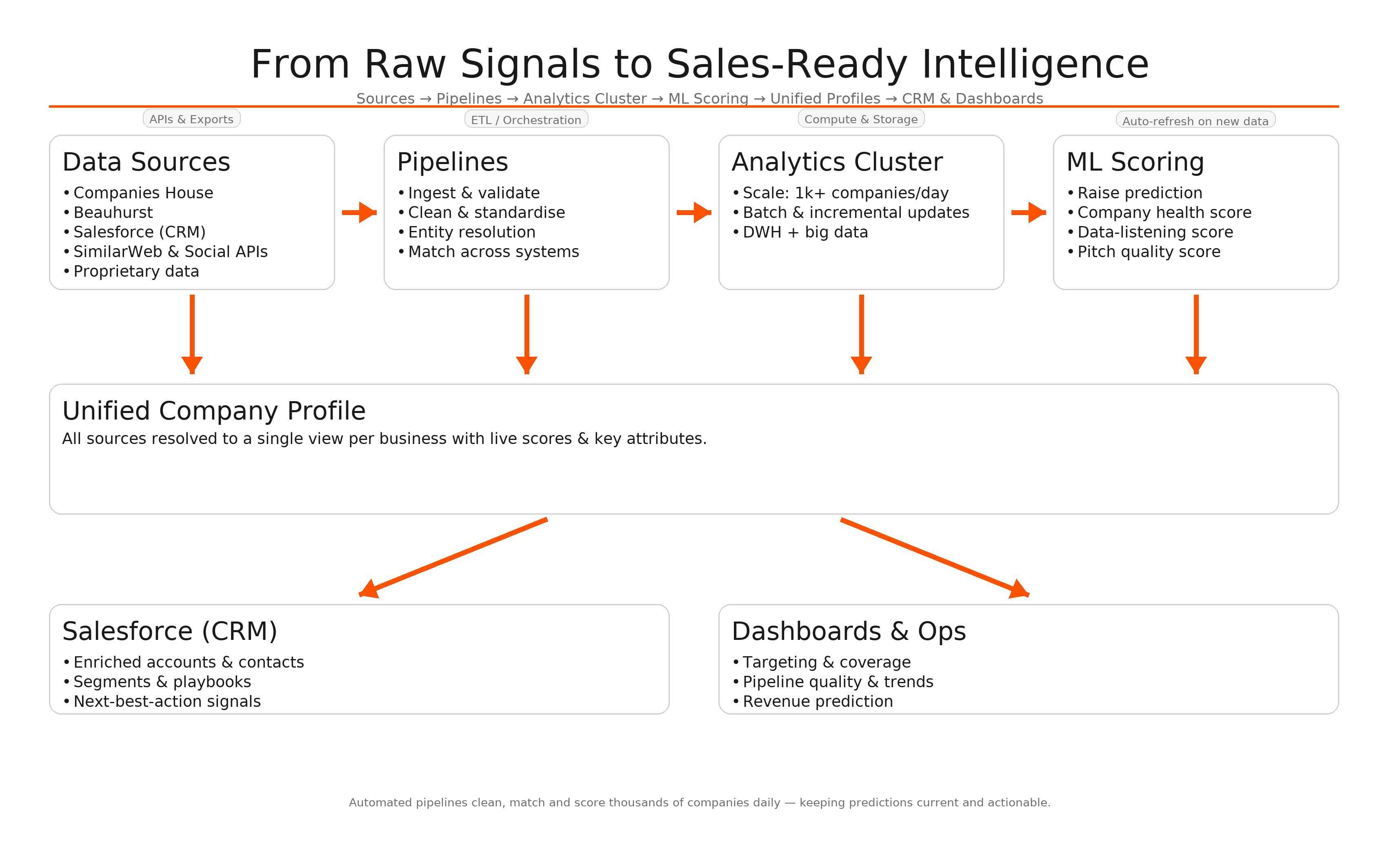
Algorithm Development & Initial Scoring
With our data foundation in place, we developed the first iteration of our predictive scoring algorithm. Working closely with our data science team, we identified key variables that historically correlated with successful fundraising outcomes, including company age, sector, previous funding history, and social media engagement metrics. The initial model was relatively simple but provided a baseline score that we could test and refine.
We conducted extensive backtesting using historical data from successful and unsuccessful campaigns over the previous two years. This allowed us to calibrate our scoring thresholds and understand which factors were genuinely predictive versus merely correlated. The V1 model achieved 68% accuracy in predicting successful launches, giving us confidence to proceed with real-world testing.
"Data science isn't about building the perfect model - it's about building a model that's better than human intuition, which honestly isn't that difficult."
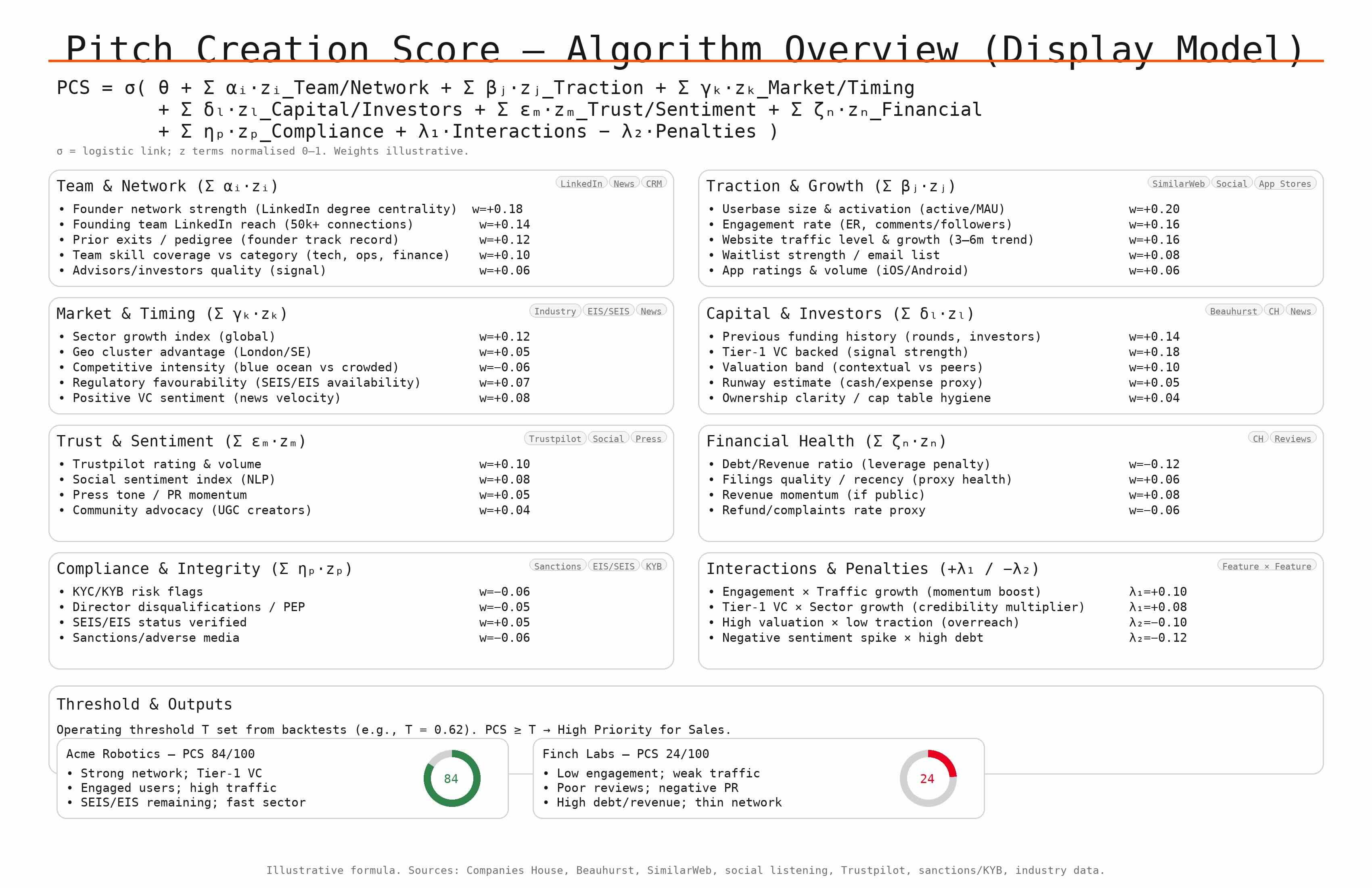
Salesforce Integration & User Testing
The third phase focused on making our scoring system usable by embedding it directly into Salesforce, where our Equity Campaign Managers (Account Managers) managed their daily workflows. This required significant technical integration work to ensure scores appeared automatically alongside existing company information, updated in real-time, and provided actionable insights rather than just numbers.
We conducted extensive user testing with the ECM team, gathering feedback on how the scores influenced their decision-making and where the system needed refinement. The feedback was invaluable - users wanted to understand not just the score but the reasoning behind it, leading us to develop explanatory features that showed which factors contributed most to each company's rating.
"The best AI system is one that augments human intelligence rather than replacing it - our job was to make smart people even smarter."
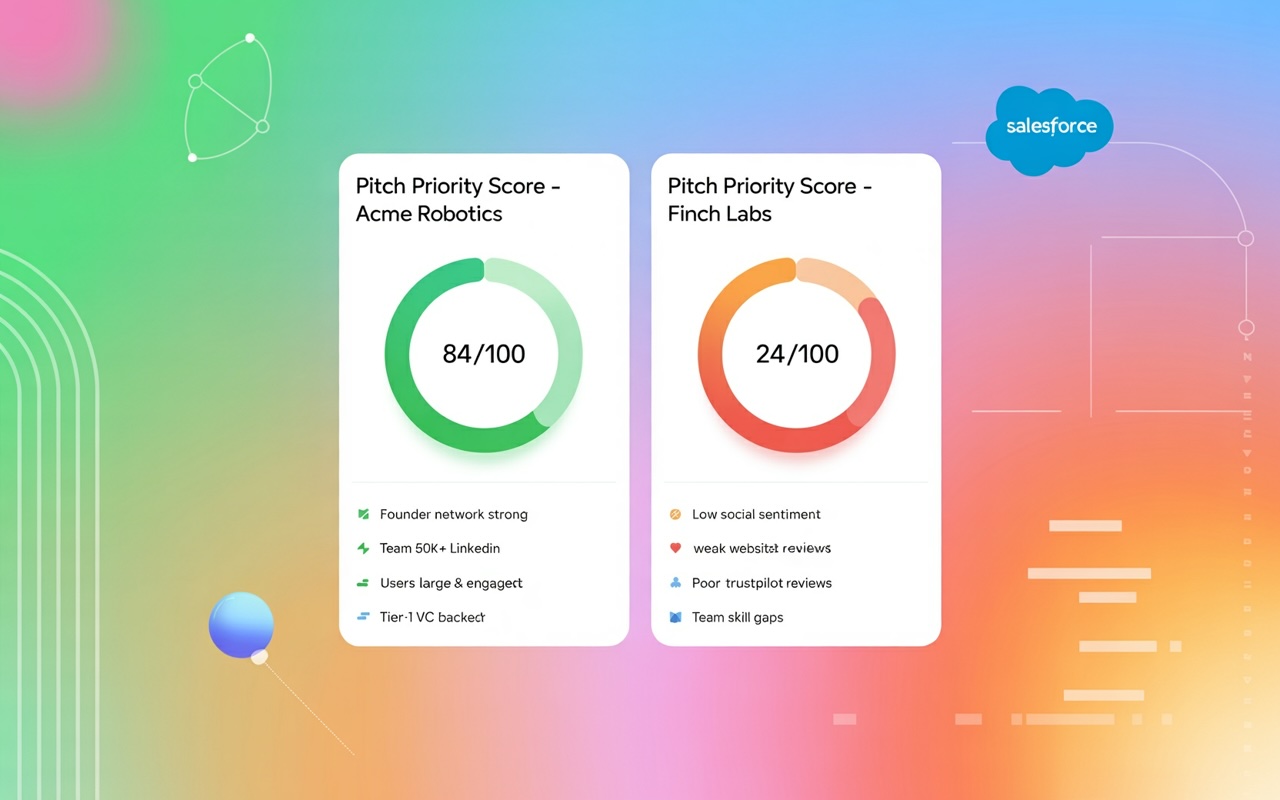
Advanced ML & Performance Optimisation
The final iteration incorporated advanced machine learning techniques, including ensemble methods that combined multiple algorithms to improve prediction accuracy. We added dynamic learning capabilities that allowed the system to continuously improve based on actual outcomes, creating a feedback loop that made predictions more accurate over time.
We also expanded the data sources to include web scraping, advanced social media sentiment analysis, and competitive intelligence. The V4 system achieved 84% accuracy in predicting successful fundraising outcomes and was processing over 2,000 company assessments monthly. More importantly, it was generating actionable insights that directly translated into increased revenue for the business.
"Version 4 wasn't just predicting the future - it was helping our teams create it by focusing their energy where it would have the greatest impact."
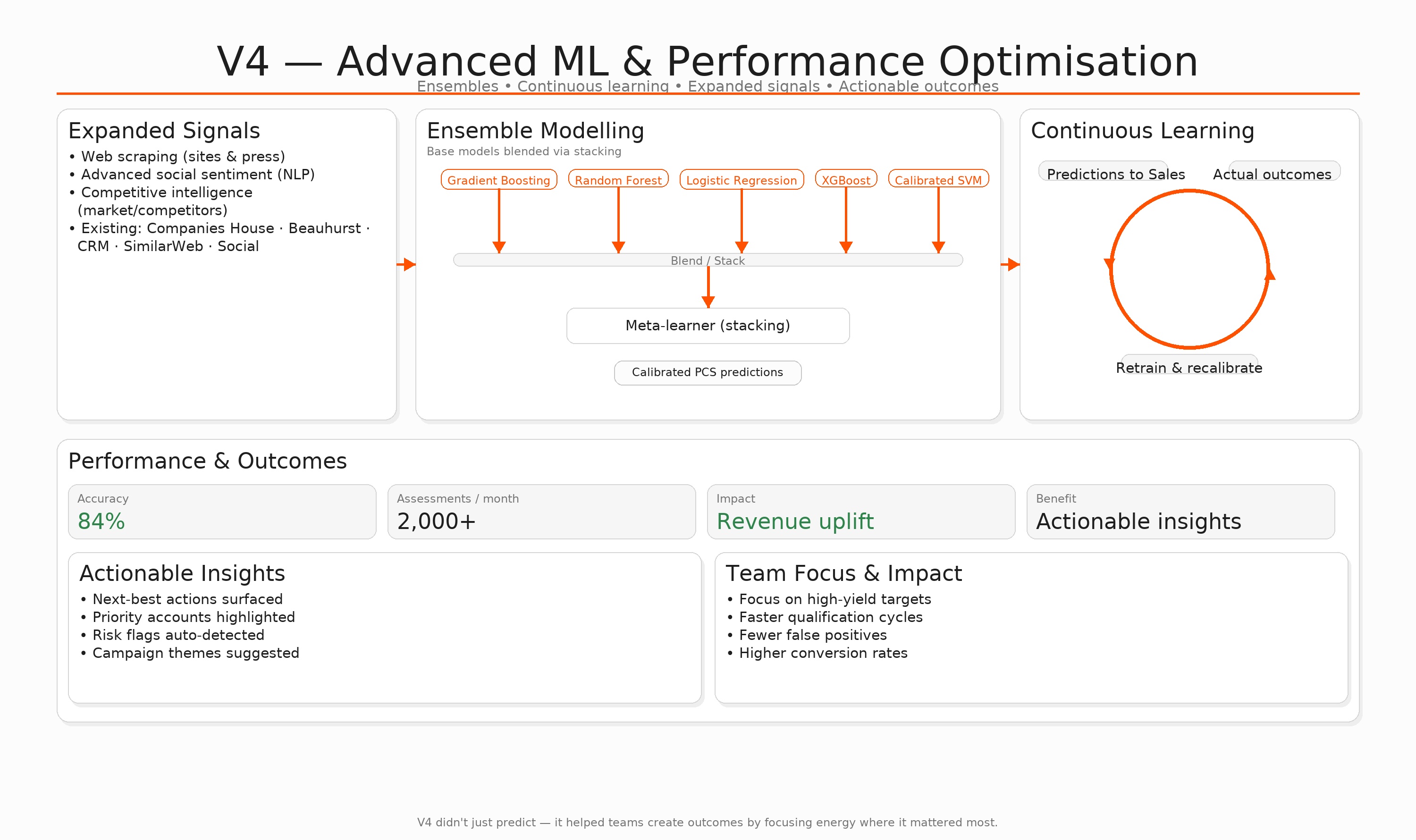
The Results
When artificial intelligence meets revenue intelligence the numbers speak for themselves
Project Sahara transformed how Crowdcube approached business development and resource allocation. The AI-driven priority scoring system enabled our teams to focus on high-potential opportunities whilst automatically identifying businesses that required additional support. Most significantly, the system paid for itself within three months through improved conversion rates and reduced time-to-launch for quality pitches. The project established Crowdcube as a pioneer in applying machine learning to equity crowdfunding, creating competitive advantages that persist today.
YoY Increase
YoY increase in sales conversion rate through targeted opportunity focus
Improvement
Improvement in revenue-generating work allocation for account managers
Additional Revenue
Additional revenue generated from optimised resource allocation
Prediction Accuracy
Prediction accuracy for successful fundraising outcomes in final model
Companies Monthly
Companies assessed monthly through automated scoring system
Payback Period
Payback period for entire project investment through efficiency gains
Learnings & Reflections
Building AI that humans actually want to use
Project Sahara taught me that successful AI implementation is 20% technology and 80% change management. The most sophisticated algorithms are worthless if users don't trust or understand them. The project's success came from maintaining constant dialogue with end users, iterating based on real feedback, and ensuring the system enhanced rather than replaced human expertise. Most importantly, I learned that AI projects succeed when they solve genuine business problems rather than chasing technological trends.
User Adoption is Everything
The difference between successful and failed AI projects isn't algorithmic sophistication but whether humans actually use the system in their daily workflows
Data Quality Trumps Algorithm Complexity
We spent more time cleaning and standardising data than building models, and this foundation work was crucial to achieving reliable predictions
Continuous Learning Requires Continuous Feedback
The most powerful feature was the system's ability to learn from outcomes, but this only worked because we built robust feedback loops with the sales teams